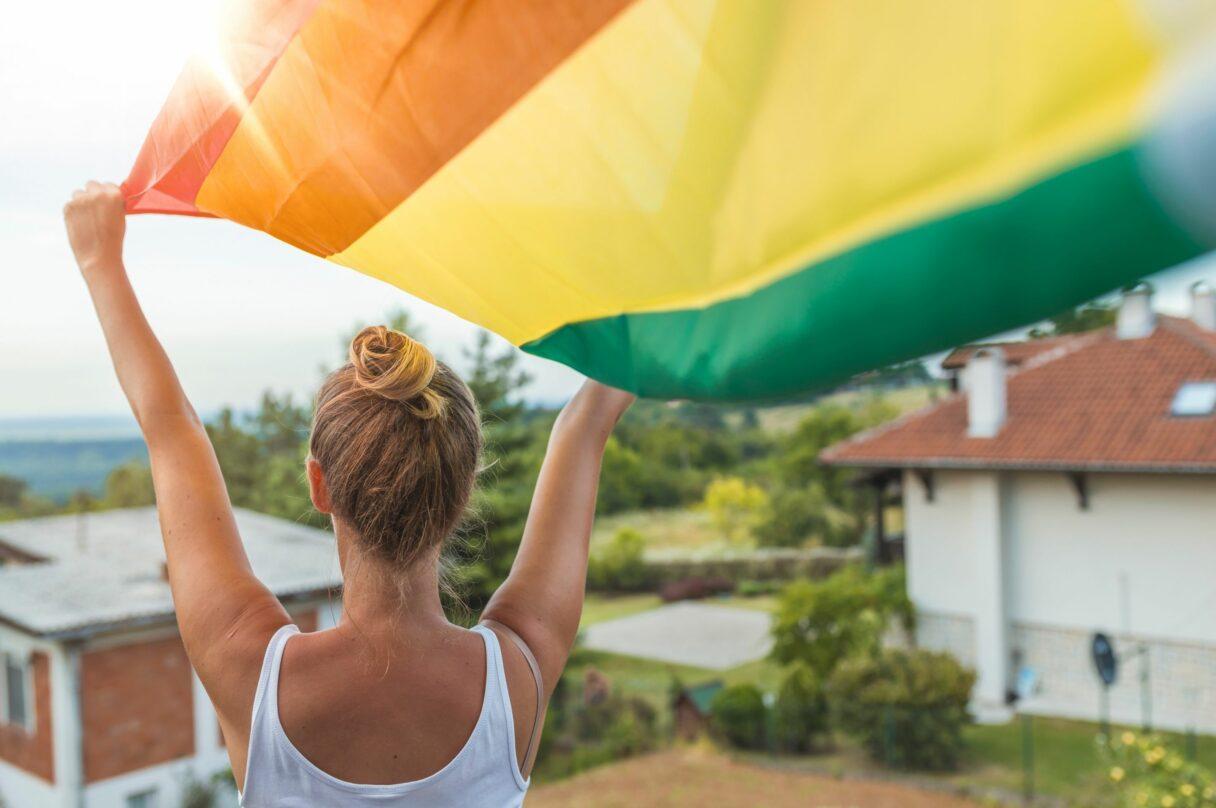The biological sex and the main concepts behind sexual identity
Sexual identity defines every human being and it is the combination of:
- Biological sex – the sex assigned at birth
- Gender identity – the personal experience of one’s own gender, which might match the biological sex or not (in the case of the latter, we are talking about transgenderism)
- Sexual orientation – It concerns the sphere of sexual and romantic attraction, which could be for someone of the opposite sex, of the same sex, both, and even more.
- Gender stereotypes – how one is supposed to behave according to the society they live in
Growing up in a society where the biological sex defines who you are and puts you on a path where your choices seem to have already been taken, leaving you no room for your true colors, might be quite frustrating – above all if you do not fit in them at all.
It all starts with colors – blue for boys, pink for girls – and it then comes to all the spheres of our life: sports, professions, passions, role models, literature, behavior, music, and so on.
During the centuries everything has been gendered, and the result is our astonishment and bias for a girl that plays soccer instead of doing ballet, or for a boy that decides to become a nurse over the chance to start a career as a surgeon.
And if life is quite uneasy and full of expectations for heterosexual and cisgender children, how do you expect it to be for a queer teenager who is trying to define themselves in a hostile environment, where they daily have to face stereotypes, biases, bad jokes and bullying from their schoolmates?
According to Gay Help Line survey and research, there are many high school students that still consider homosexuality and transgenderism a disease that needs to be cured, a choice, something to be afraid of, and still would not feel comfortable spending time in the same room with a queer classmate. As if one’s sexual orientation or gender identity might somehow threaten them.
Of course, it sounds horrible, and no one would like to be in their shoes – but still, hate speech and violence against teenage students who decide to come out of the closet are to be taken into serious consideration, and the school staff – from the principal to the teachers – should be fully aware of what happens through their institution walls.
The trauma of the coming-out experience

On this basis, you can clearly imagine how the coming-out experience becomes difficult and sometimes traumatic.
Queer teenagers who decide to expose themselves are indeed challenging their schoolmates’ trust, facing their fear of being rejected, misunderstood, threatened, and – even worse – physically assaulted.
It is not uncommon for them to become victims of bullying, as bullies can make jokes and verbally and physically abuse them over and over again. Not all bruises show, and there are inner marks and scars that will never heal.
In the UK, almost half of the LGBTIQ+ students are experiencing homo-lesbo-bi-phobic bullying, and the percentage even rises when it comes to transgender pupils – who find themselves attacked for showing their true colors and stating that they are uncomfortable in their own bodies.
It only takes a look at the 2017 Stonewall School Report to understand the awful perspective, and how could a student decide to come out and ask for friends and teachers’ support on such a stage?
Intolerance, hatred, and bullying in education
As a matter of fact, it is not commonplace to consider these as the most fragile years for a teenager.
The urgency to define themselves and find their place in the world is crucial. They feel the pressure to match the standards, to prove their value, and – last but not least – somehow belong.
On the other hand, things get a lot more complicated for the LGBTIQ+ pupils, who also have to face the need to act “normal” and must double their efforts in order not to disappoint the expectations of a society that constantly pushes, labels, and belittles them; of classmates that can barely stand their presence without making jokes and comments.
Queer peers are usually bullied because considered “different” – from whom? we may wish to ask – and all they crave is hiding not to get noticed and become victims of hate speech and rumors targets. As if their individuality were something they should feel ashamed of and bury under layers of normality and homologation to the standards.
In the USA, almost 9 out of 10 LGBTIQ+ students have been verbally and physically harassed at least once in their years at school – the percentage is quite worrying. It sounds like a silent alarm that has been voluntarily ignored.
And being disregarded is the first step that brings many teenagers to putting an end to their lives – too tired of fighting the daily hatred; too humiliated to stand and push the violence back; too invisible and rejected for someone to actually stand by their side, too afraid they will suffer the same fate.
Homophobia, intolerance, hatred, bullying – a lethal combo that, if pushed too far, is able to stretch people over their limits to a definitive breaking point.
And here comes the need to make the school a better and safer environment for all students.
What teachers can do for their LGBTIQ+ students

The hardest part of being a queer student is to find an adult you can feel safe talking to.
As a teacher, there are several things you can do to create a safe and inclusive environment in your classroom, and thus become the person they can trust.
The first step is to tackle all biases and stereotypes related to gender. Put an end to the boys will be boys rhetoric, and start challenging them to build critical thinking for a more productive dialogue.
Let them share their experiences, enhance a different perspective and make them feel what it means to wear someone else’s shoes – above all when they are uncomfortable ones.
Push them to be more empathetic by showing them that boys and big girls can cry too, that feelings are not necessarily a sign of weakness, and that there is no need to raise the voice and use violence to prove their value.
Moreover, encourage them to dream big and to leave all the biases behind – tell them they can become whoever and whatever they want to be, no matter what society says.
In a nutshell, be the teacher and the person they can lean on in case of need.
6 tips on how to tackle gender biases and stereotypes in the classroom
And here we go – now comes the hardest part.
If tackling gender-related stereotypes might seem quite hard work, biases and prejudices related to sexual orientation and gender identity are the most difficult to wipe out.
Here are some suggestions for you:
1) Make your classroom a safe and inclusive space
Let your students understand that your classroom is a safe place, where everyone is welcome and no one is judged for their appearance, being, feeling.
Paste posters and stickers on the wall, bring gadgets that might have a peculiar meaning, do not allow any homophobic behavior or word into your classroom. Make clear you are an ally.
2) When in doubt, ask them
When – coming to a queer topic – you do not know the right words to use or how to make a concept clear, there is no better way to show your pupils how much you take them into account than asking them.
They will surely appreciate the effort, and you both will learn something new.
3) Provide your students with a more inclusive study material

Integrate the program with topics related to the LGBTIQ+ community, introduce them to queer writers, homosexual scientists and politicians, transgender activists, and make it clear that they are not alone – whatever they are going through, someone else before them has already been there and survived.
Then, it might be useful to start a debate and let everyone share their opinion – of course, moderate the language and tones.
4) Be proud of your students’ coming out
As mentioned above, the coming-out can be a terrifying experience, so show your pride to the students that decide to get out of the closet and speak their truth. Encourage them to be defined not by means of stereotypes, and price their originality, celebrate their individuality.
They are unique and have nothing to be ashamed of.
Also, on the other side, pay attention to outing rumors and comments made by other students. Remember, the coming-out is a choice, outing is violence.
5) Call them as they prefer
Always ask your pupils which pronouns they feel comfortable with and let them be known by their preferred name – using the right names and pronouns will indeed help them feel accepted, more relaxed, safer, and – of course -protected.
6) Encourage them to denounce violence and bullying
Stand by their side throughout the process. It might be difficult, above all because they will have to face the fear of being misunderstood or not taken seriously, but knowing that you will be there for them will surely make them feel empowered and help them survive the pain and the humiliation.
The list above is just a suggestion of what to do to wipe out homophobic bullying and stereotypes from your classroom, and you cannot guarantee that your LGBTIQ+ students will be safe from bullying behaviors.
On the other hand, as a teacher, your habits and actions will have a huge resonance on your students’ perspective of the world they live in. Your ideas, your beliefs, will influence them, and for sure they will always remember your efforts to make them feel understood, included, loved.
If you wish to explore and deepen your knowledge on these topics, our course “Gender and Sexuality: How to Support and Guide Your Students” might help you find new communication channels with your students and create a safe environment where they all will feel free to be.


Very well written article with excellent tips. Brava, Giulia!
Thank you! 😍
I loved your article, simple written but profound.
Thank you!
Thank you, Anastasia.
Sometimes talking about this kind of topics might be quite challenging indeed, but the best way to be understand is surely getting deep, sharing experiences, and talking by heart.